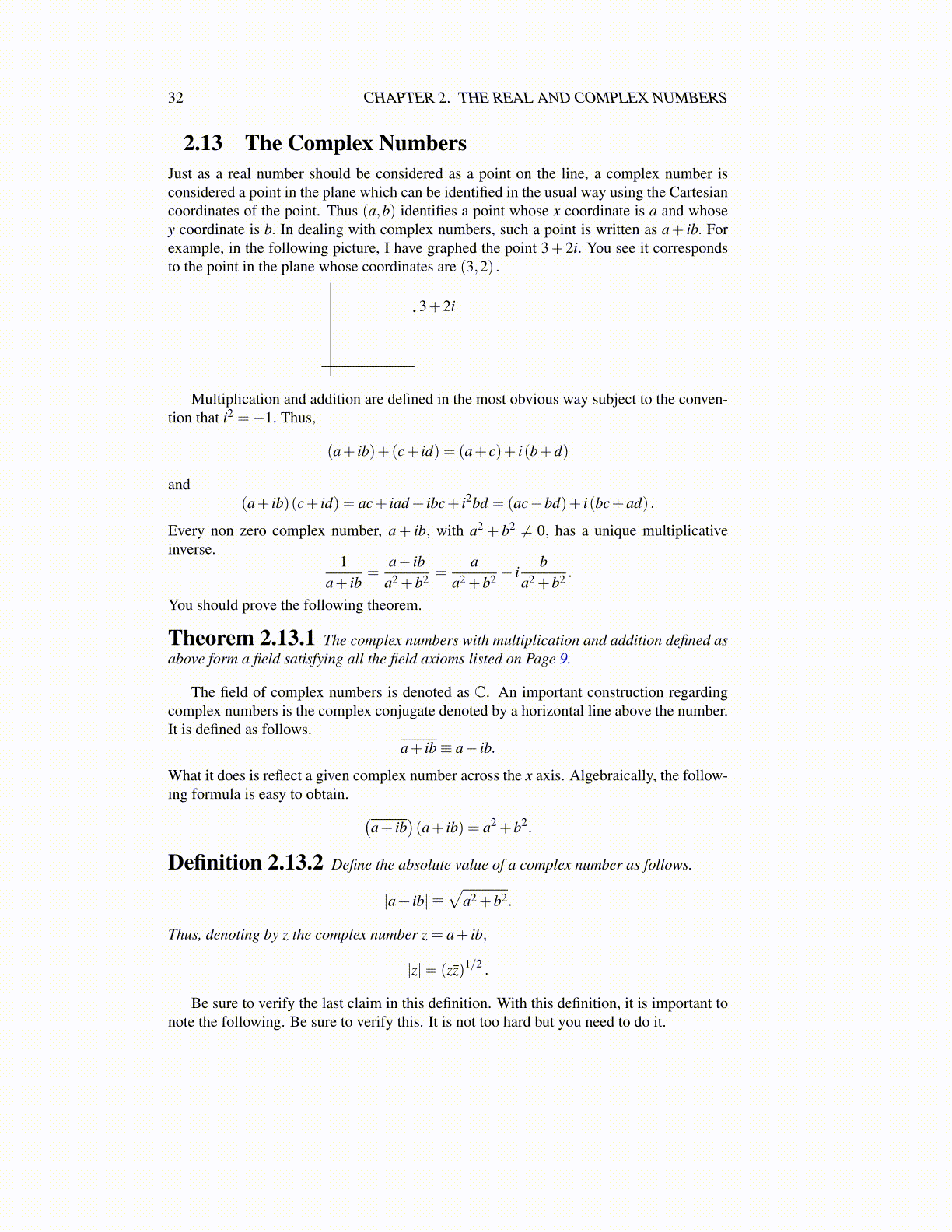
32 CHAPTER 2. THE REAL AND COMPLEX NUMBERS
What it does is reflect a given complex number across the x axis. Algebraically, the follow-ing formula is easy to obtain. (
a+ ib)(a+ ib) = a2 +b2.
Definition 2.13.2 Define the absolute value of a complex number as follows.
|a+ ib| ≡√
a2 +b2.
Thus, denoting by z the complex number z = a+ ib, |z|= (zz)1/2 .
Be sure to verify the last claim in this definition. With this definition, it is important tonote the following. Be sure to verify this. It is not too hard but you need to do it.
Remark 2.13.3 : Let z= a+ ib and w= c+ id. Then |z−w|=√(a− c)2 +(b−d)2. Thus
the distance between the point in the plane determined by the ordered pair, (a,b) and theordered pair (c,d) equals |z−w| where z and w are as just described.
For example, consider the distance between (2,5) and (1,8) . From the distance formulawhich you should have seen in either algebra or calculus, this distance is defined as√
(2−1)2 +(5−8)2 =√
10.
On the other hand, letting z = 2+ i5 and w = 1+ i8, z−w = 1− i3 and so
(z−w)(z−w) = (1− i3)(1+ i3) = 10
so |z−w|=√
10, the same thing obtained with the distance formula.
Notation 2.13.4 From now on I will sometimes use the symbol F to denote either C or R,rather than fussing over which one is meant because it often does not make any difference.
The triangle inequality holds for the complex numbers just like it does for the realnumbers.
Theorem 2.13.5 Let z,w ∈ C. Then
|w+ z| ≤ |w|+ |z| , ||z|− |w|| ≤ |z−w| .
Proof: First note |zw|= |z| |w| . Here is why: If z = x+ iy and w = u+ iv, then
|zw|2 = |(x+ iy)(u+ iv)|2 = |xu− yv+ i(xv+ yu)|2
= (xu− yv)2 +(xv+ yu)2 = x2u2 + y2v2 + x2v2 + y2u2
Now look at the right side.
|z|2 |w|2 = (x+ iy)(x− iy)(u+ iv)(u− iv) = x2u2 + y2v2 + x2v2 + y2u2,